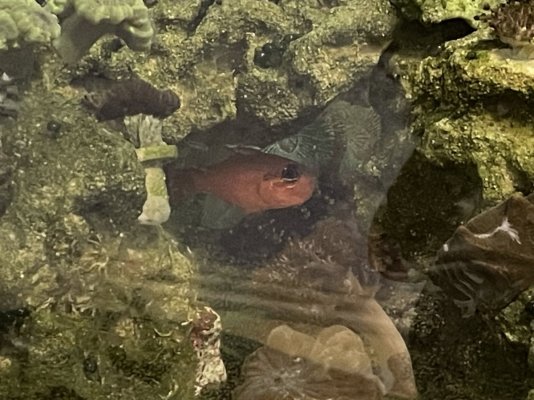
After about three months of having a flame, cardinal fish pair, they started to breed! Does anyone know if the eggs will be pelagic or full grown like bangaii?
Original story is I had these two quarantined in a small 10 gallon tank where they would protect their territory and found them to be very aggressive towards one another, however once I moved them into the big tank, I saw the female which is surprisingly larger shaking and dancing with the smaller male. They would do this vibrate spin at night for courtship and found out that overnight yesterday the male finally participated. This made me wonder when a potential clutch of eggs would happen. Next morning I’m doing my testing and found the males mouth to be ajar and noticed something off when I fed the tank, he did not eat. That is when I noticed this big clutch of eggs in his mouth and have payed attention to his moving around of the eggs in his mouth.

















